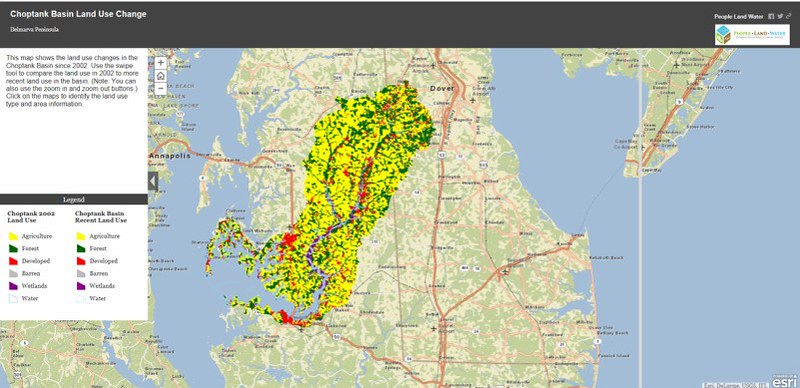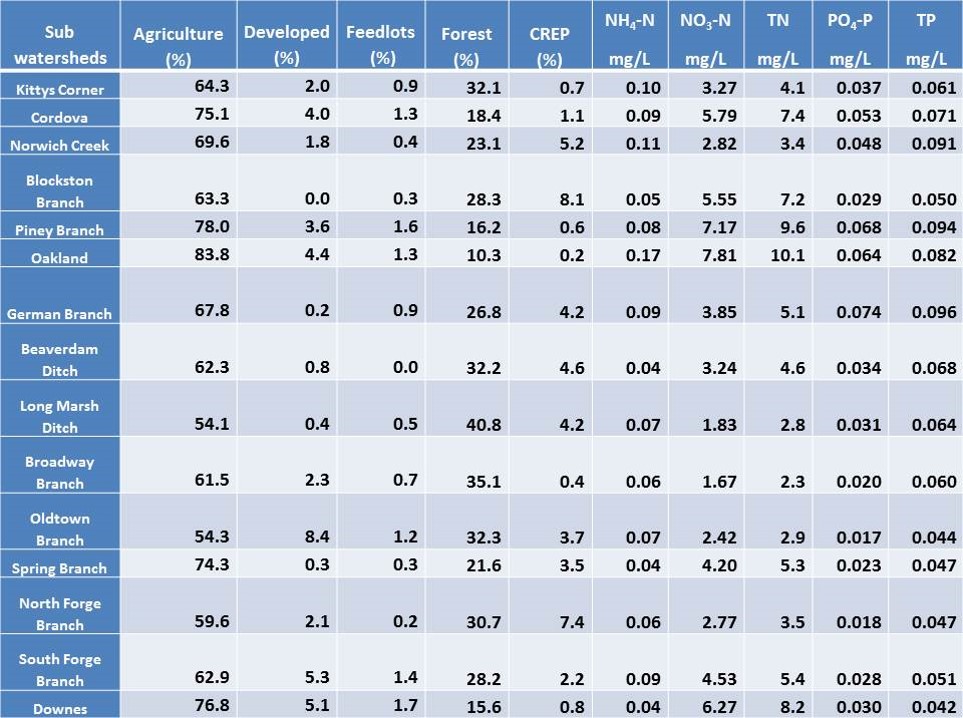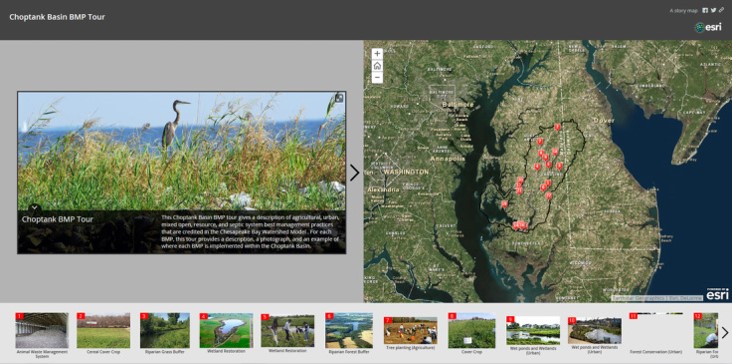Land use changes in the Choptank Watershed
Click on the map below to compare recent land use and 2002 land use in the Choptank watershed

The Maryland Department of Planning uses the following categories to define the land uses within an area.
• Developed – includes residential, industrial, institutional (such as schools and churches), mining, and open urban lands (such as golf courses and cemeteries)
• Agriculture – includes field, forage, and row and garden croplands; pasturelands; orchards and vineyards; feeding operations; and agricultural building/breeding and training facilities, storage facilities, and built-up farmstead areas
• Forest – includes deciduous forest, evergreen forest, mixed forest, and brush
• Water – includes rivers, waterways, reservoirs, ponds, and the Bay
• Wetlands – includes marshes, swamps, bogs, tidal flats, and wet areas
• Barren – includes beaches, bare exposed rock and bare ground
Human Impacts on the Choptank Watershed
Portions of the Choptank River have been identified as “impaired waters” under Section 303(d) of the Federal Clean Water Act due to high levels of nutrients (inorganic forms of nitrogen and phosphorus that all organisms need) and sediments. Intensive agriculture and human waste disposal provide the largest sources of Nitrogen and Phosphorus. The primary sources of terrestrial nutrients in the Chesapeake Bay and the Choptank are similar. Overexploitation of fish and shellfish populations has compounded water-quality problems. Overfishing has resulted in diversity loss and progressive dominance by short-lived, pelagic species. The ecosystem consequences of overfishing are similar to those of nutrient enrichment and can interact with enrichment in complex ways. Collectively, these anthropogenic effects on nutrient inputs and trophic structures are referred to as ‘‘cultural eutrophication.’’
Table1: The following data shows the land use and water quality in the sub watersheds within the Choptank Watershed monitored by UMCES Horn Point Laboratory (Dr. Fisher's lab group) between 2003 and 2006.

Click on the map below to explore the subwatersheds
In summary
Three main watershed characteristics determine the magnitude of increased nutrient export to coastal waters:
(1) human population density
(2) intensive agricultural production and
(3) the ratio of terrestrial drainage area to aquatic area.
Ways to improve water quality : Best Management Practices (BMP)
Best Management Practices (BMPs) is a term used to describe a type of water pollution control. BMPs are techniques, measures or structural controls used to manage the quantity and improve the quality of surface and ground water runoff. The goals of BMPs are to reduce or eliminate the contaminants collected by ground water and storm water as it moves into streams and rivers.




